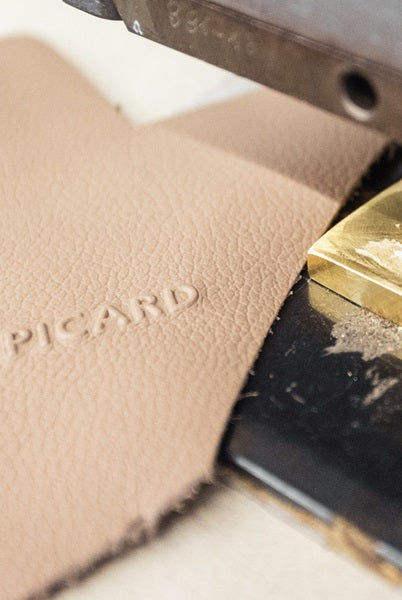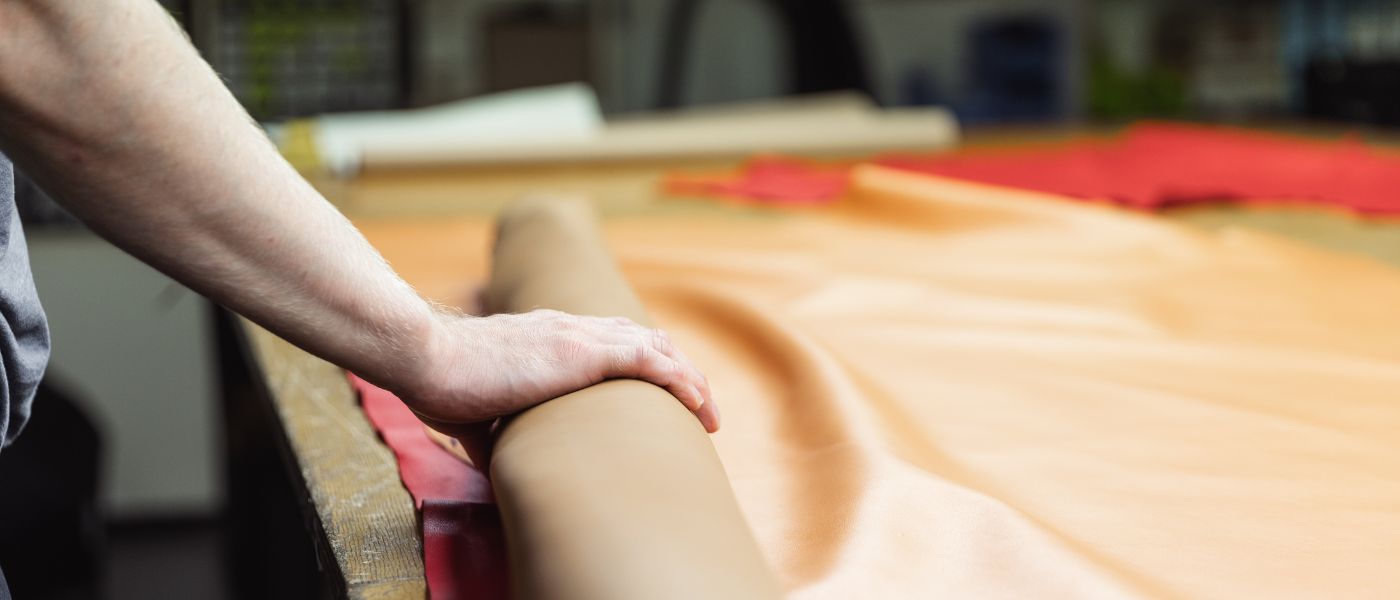Real leather and artificial leather are no longer so easy to distinguish from one another. Not least because the materials and manufacturing processes used in artificial leather have been greatly improved. Artificial leather can really deceive an untrained eye.
OK, that's all well and good, you think, but how do you recognize real leather? By the leather symbol that you find on shoes, bags and leather clothing?
Yes, this leather symbol is definitely a good sign for genuine leather.
Although the leather symbol is not protected, it is linked to a guarantee that the material is genuine leather.
OK, great, but what if the symbol cannot be found?
We'll tell you in this guide, with our tips and tricks it should be easy for you to distinguish real leather from imitation leather.
How do I recognize real leather?
If you cannot find the leather symbol, you can identify genuine leather using the following characteristics.
1. Recognize genuine leather by its structure
Real leather is like a fingerprint, it is unique. The natural grain of real leather is never as even as the grain of embossed artificial leather. Sometimes you can still feel or see small hair pores.
In addition, the grain side of the leather can have small bumps, caused for example by insect bites or stretch marks.
These small imperfections can be seen on the grain side, but don't worry, these imperfections do not reduce the quality of the leather in any way. On the contrary, these imperfections are even a sign of quality.

2. Recognize leather by its smell
Have you ever been in a tack room? It smells wonderfully of leather . The smell of leather can be very strong at first, but over time it disappears and the pleasant smell of leather remains.
Artificial leather , on the other hand, usually has no or a neutral smell . However, lower quality artificial leather can smell strongly of plastic and thus identify the artificial leather.
3. Check cutting edges
Real leather has a fibrous, rough cut edge, whereas the cut edges of artificial leather are very even.
Expert knowledge : They are almost as flat as a paper cut edge and therefore a good feature for distinguishing between real leather and artificial leather.
4. The price as an indicator of authenticity
Price is no longer a reliable indicator , as a brand name can have a strong influence on the price. Nevertheless, products made of genuine leather are generally more expensive than artificial leather products.
5. Feel haptic features
Real leather feels warm and soft , especially full-grain leather has this soft feel. Artificial leather is often cool and stiff to the touch.
6. Leather test with a lighter You often read about the lighter test, but we would definitely advise against this. Firstly, it's not great to take a lighter out of a shop to test whether it's artificial leather or real leather, and secondly , you could potentially damage the artificial leather .
Because plastic burns, leather does not ignite so easily and does not burn.
7. The back
Take a closer look at a leather belt or a leather shoe - the back is fibrous and rough. The back of artificial leather, on the other hand, is soft and smooth. This is because it is usually covered with a textile layer. This textile layer is intended to imitate the back of real leather, but it is much softer and smoother than the back of real leather.
8. The oil test
As with all of our guides, we would like to ask you to carry out this test in an inconspicuous place. If you put oil on uncoated leather, the oil will be absorbed into the leather and can darken the leather and change its structure and color.
If you drip oil onto artificial leather , it will usually roll off.
Why is it important to distinguish between artificial and real leather?
On the one hand, you would certainly like to know whether the price for the product is reasonable . But of course you would also like to know how to care for and clean the product , which is why the product label is important.
In addition, people who live vegan do not want to consume or wear animal products. To avoid this, correct labeling is extremely important.
Conclusion
Recognizing real leather at first glance can be challenging in a world where faux leather is becoming more sophisticated. This guide has highlighted eight crucial features that will help you confidently identify real leather.
From the unique structure and characteristic smell to tactile properties and cut edges, these features provide a reliable way to distinguish between real leather and synthetic leather.
Although the leather symbol is a positive indicator of genuine leather, the methods presented here are especially useful when the symbol is not available. By paying attention to the texture, smell, cut edges, feel and other characteristics, you can make informed decisions when purchasing leather products.
Knowing the differences between synthetic and real leather is important not only for your purchasing decisions , but also for properly caring for and cleaning the products , as well as taking personal preferences and ethical considerations into account.
Would you like to read more about leather properties and processing?








